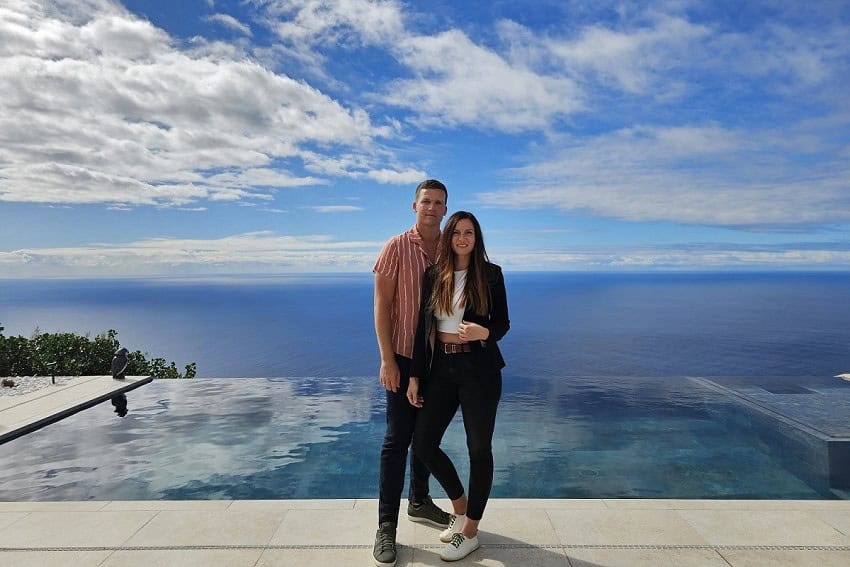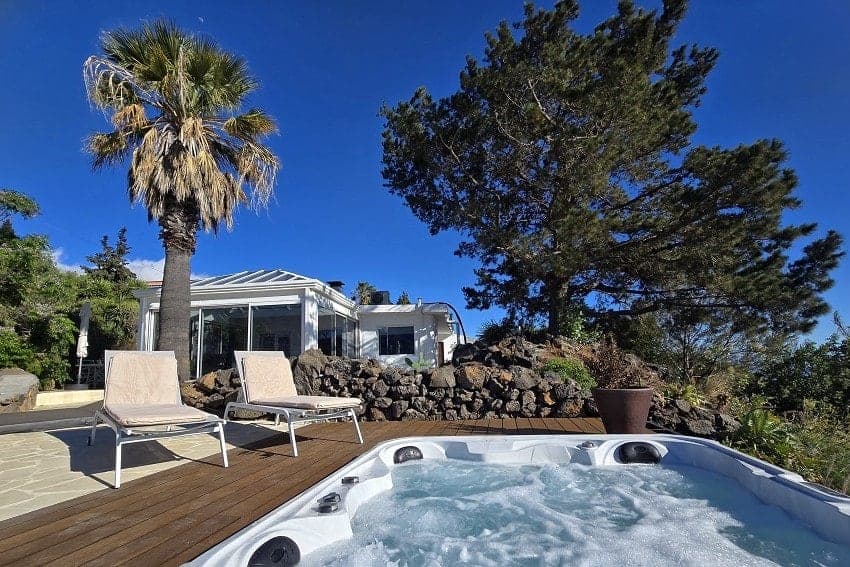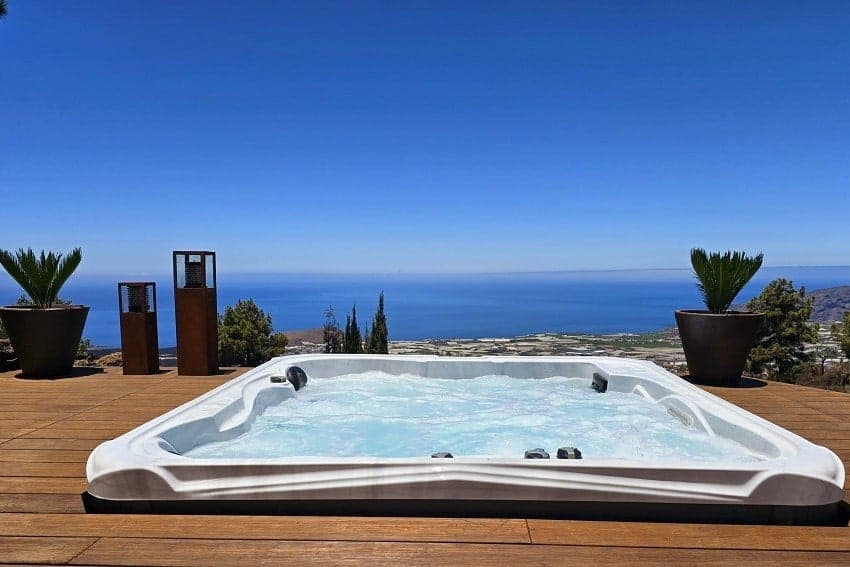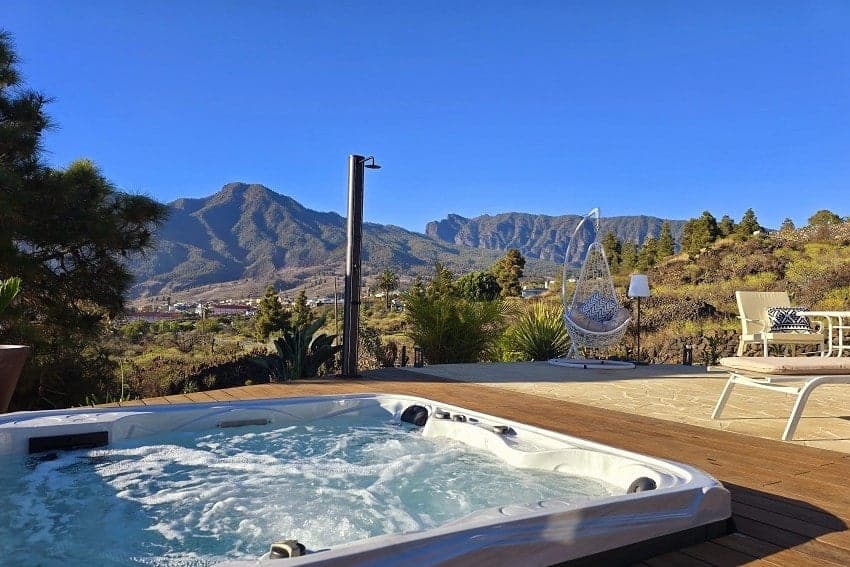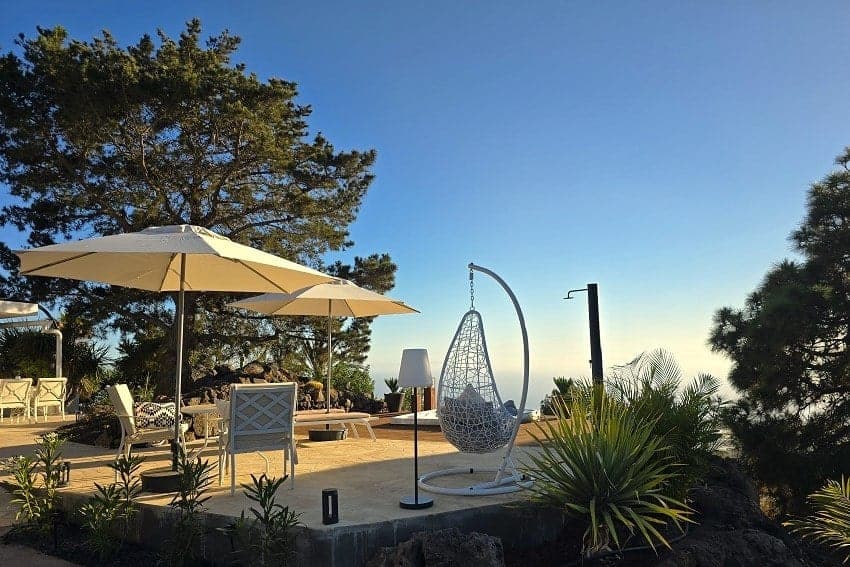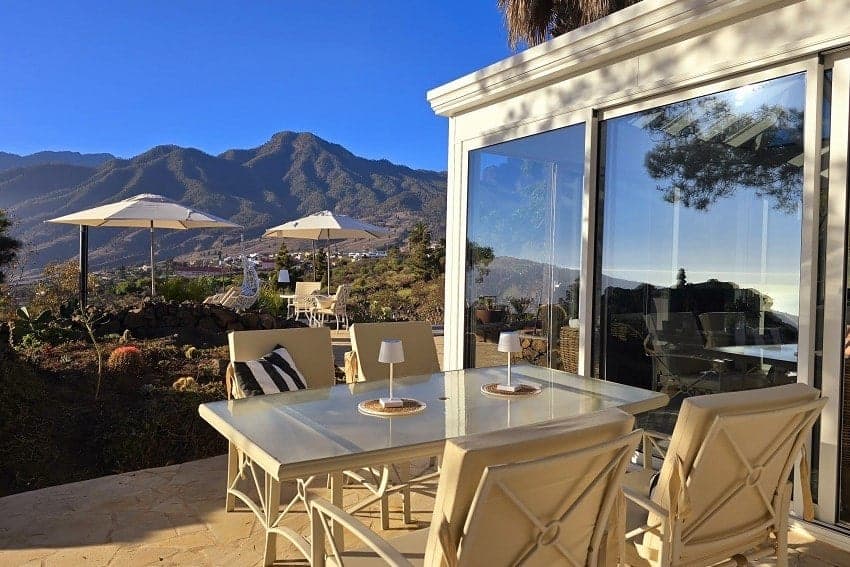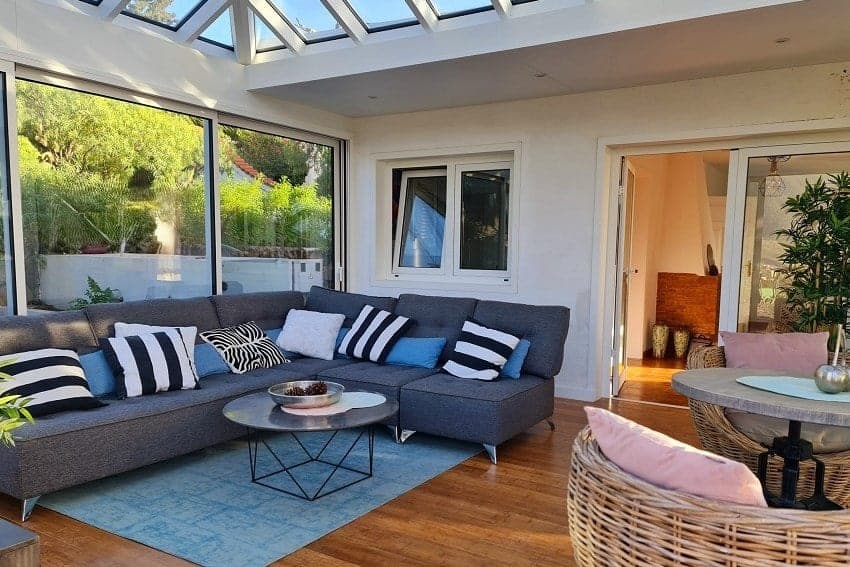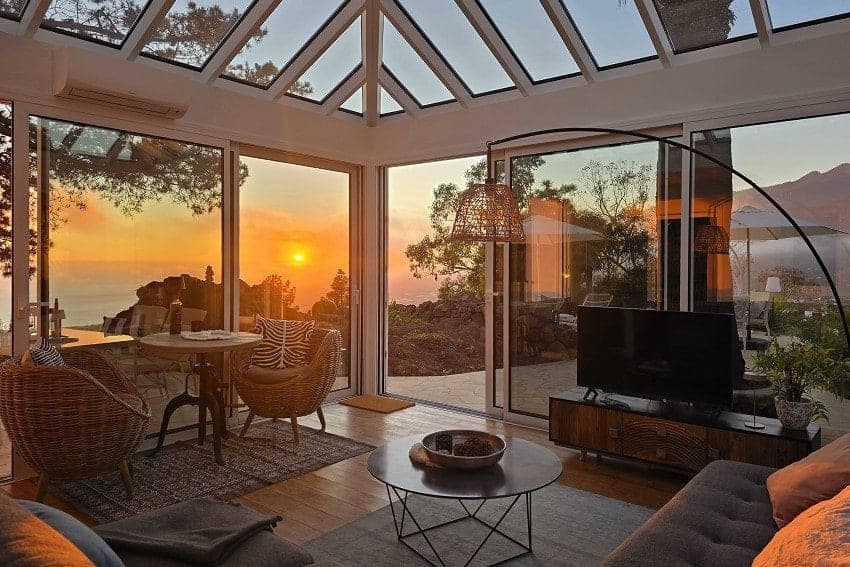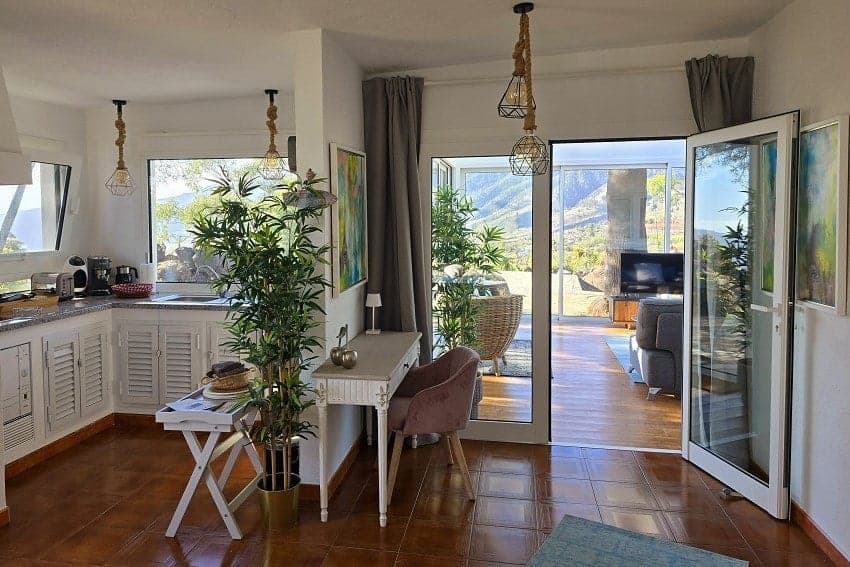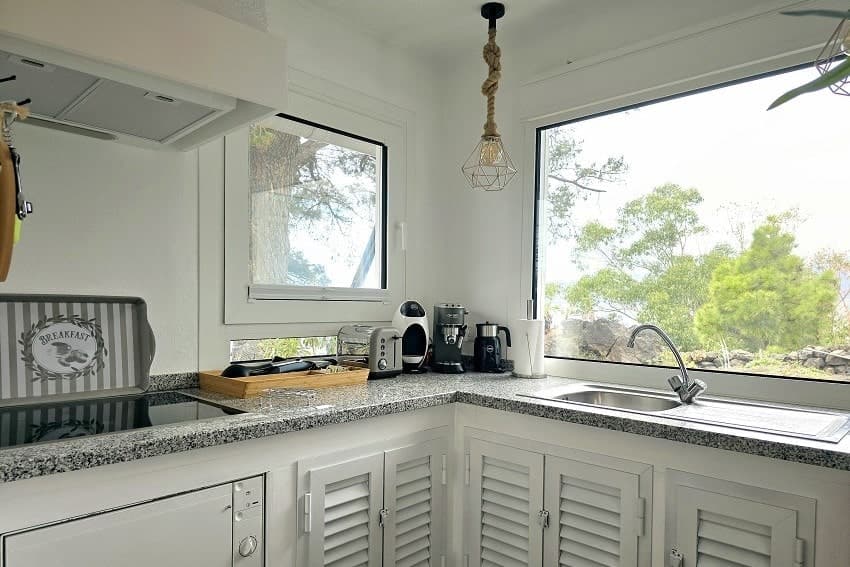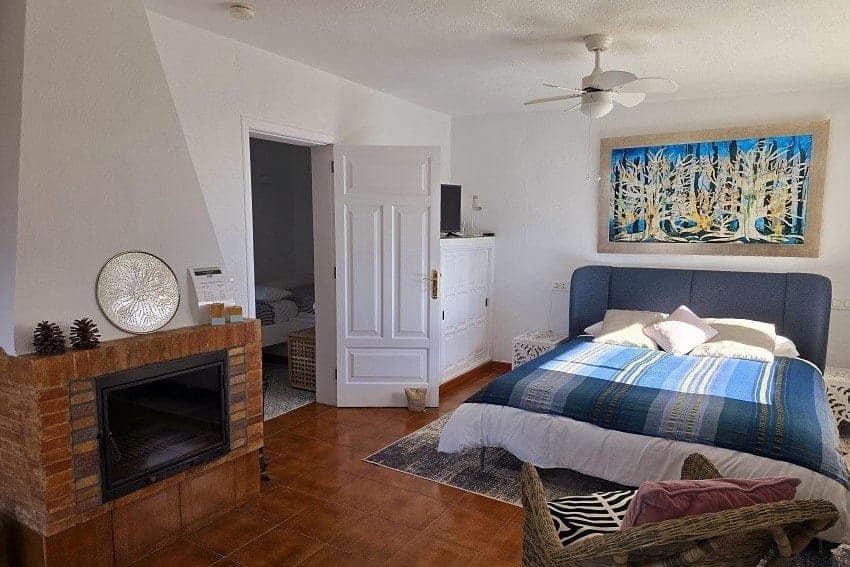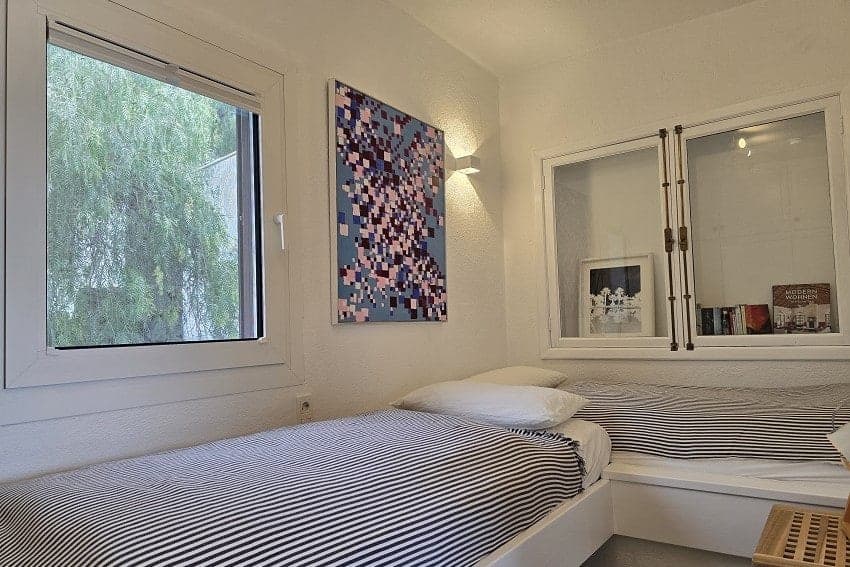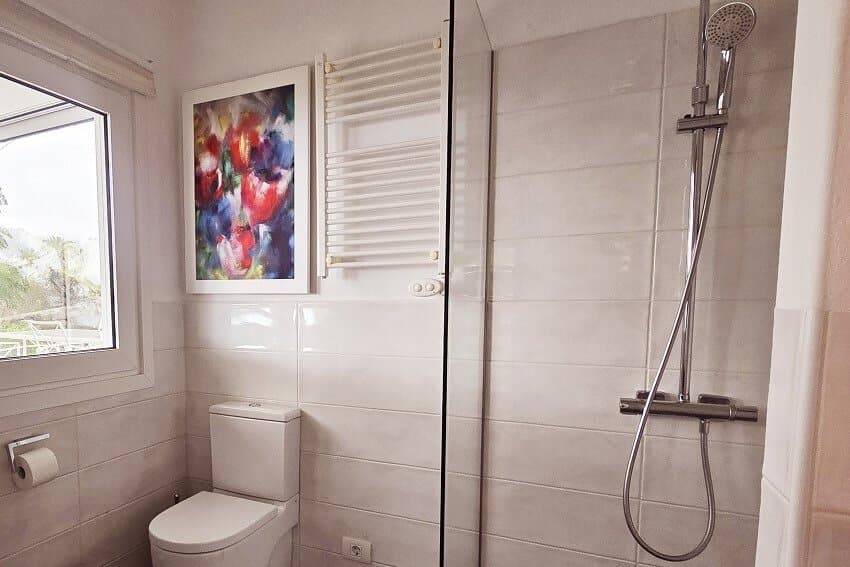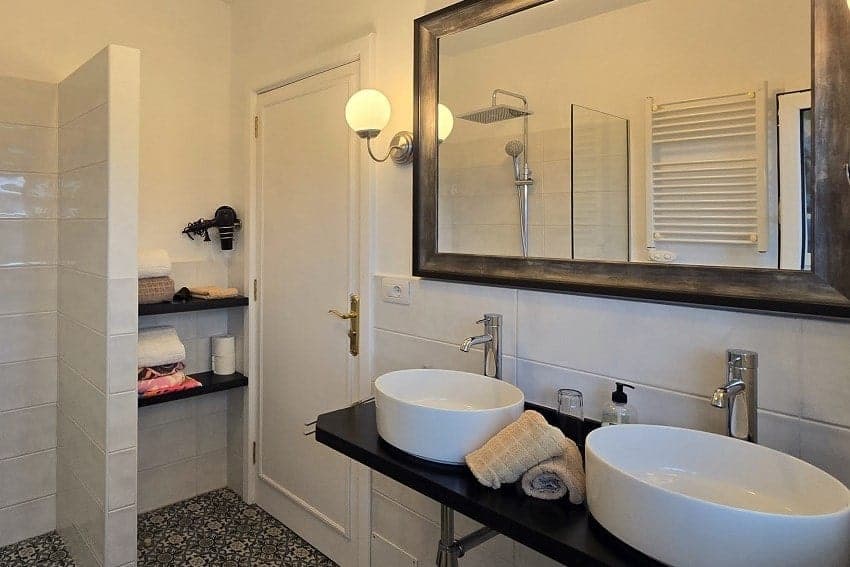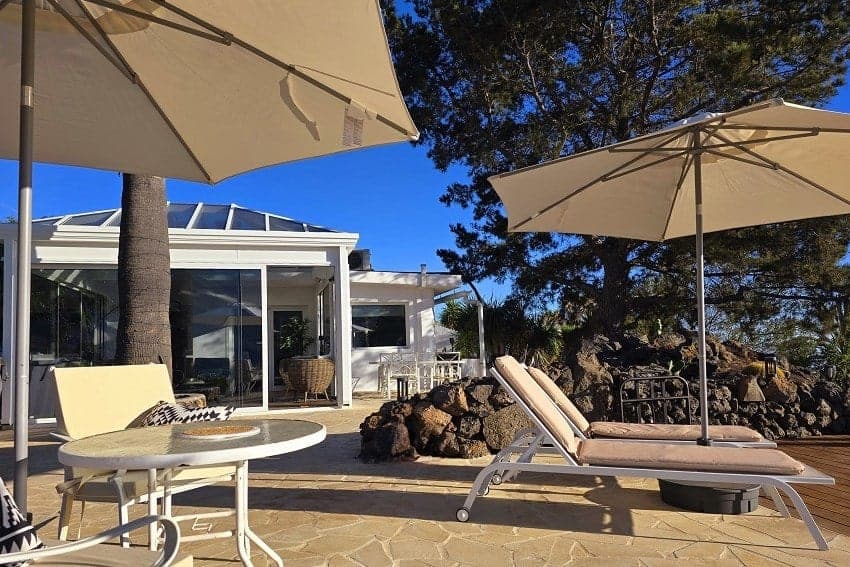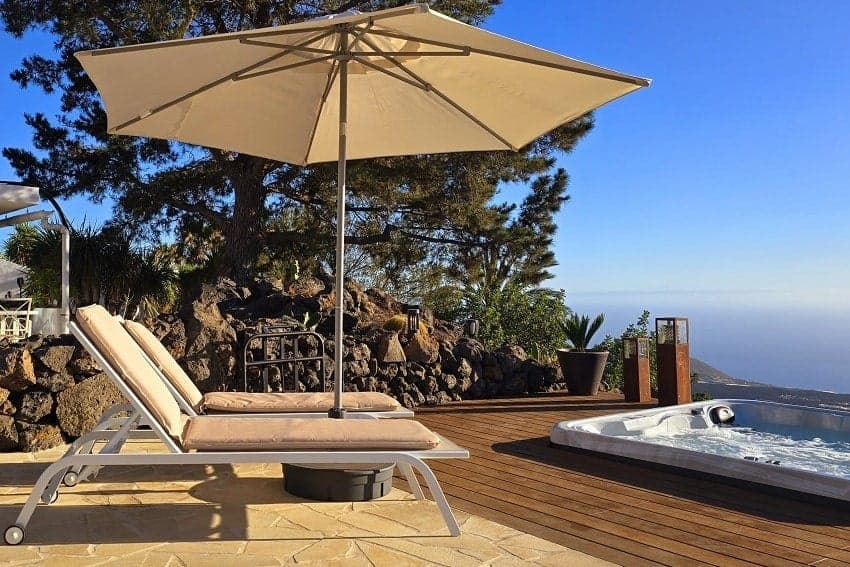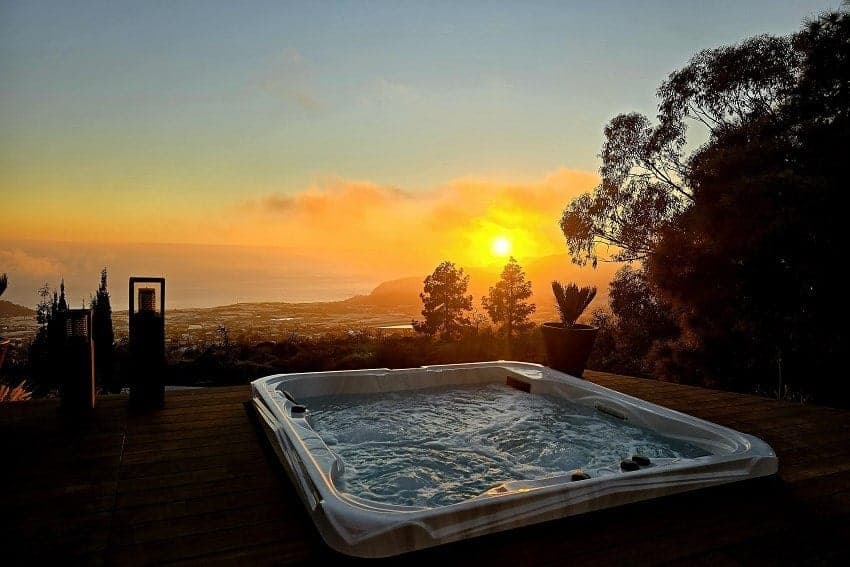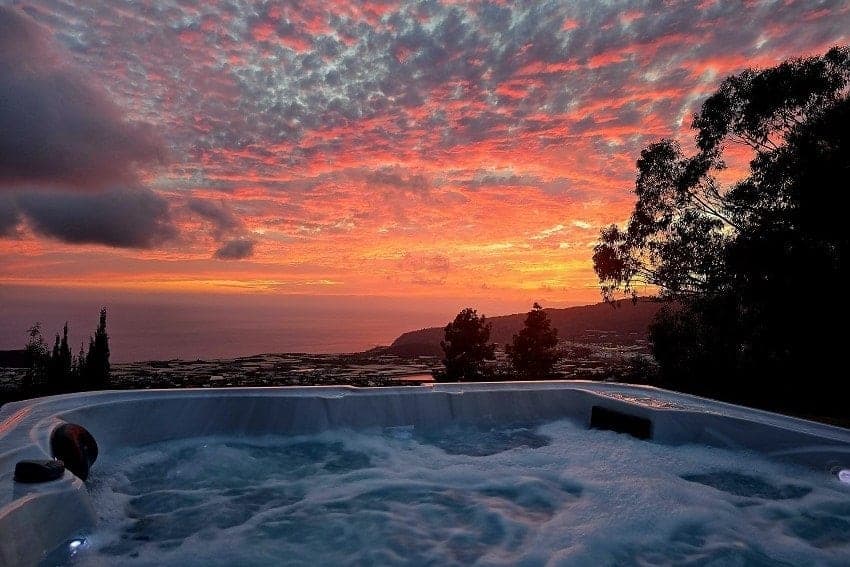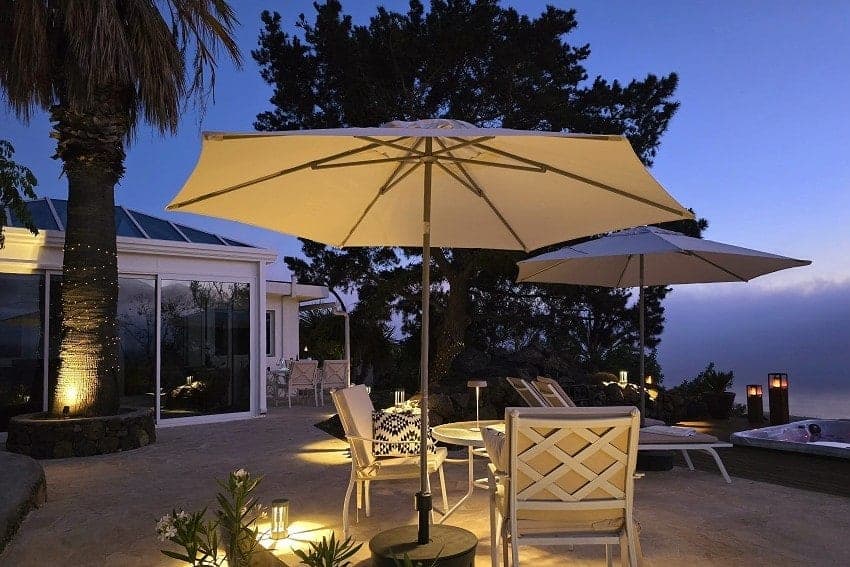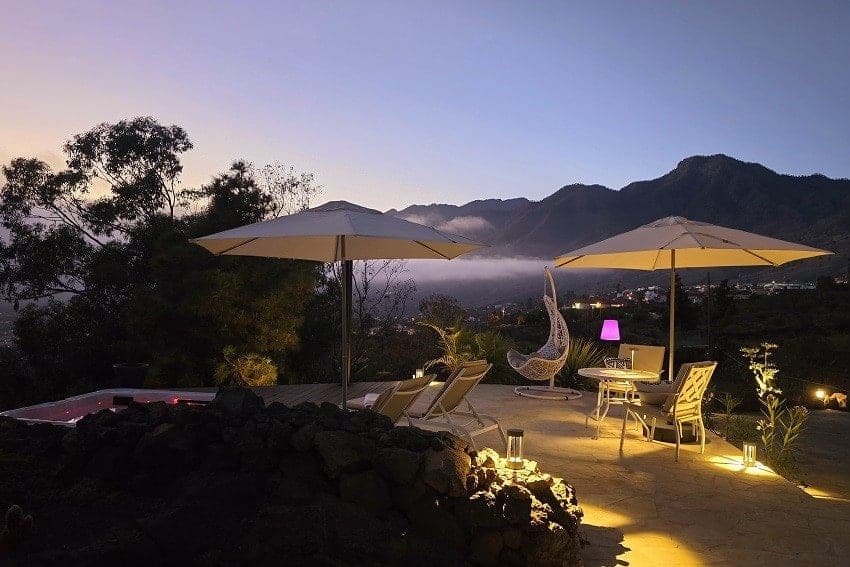Availability
Casa Miguelita
 1
1  2 1
2 1 





Tasteful holiday home in El Paso, the heart of La Palma, with a hot tub and breathtaking views of the mountains and the sea.
Located in El Paso, the holiday home features a fully equipped kitchen, neatly separated from the bedroom by a small partition. The master bedroom has a comfortable double bed. Furthermore, there is an additional bedroom with two single beds. The stylish bathroom has a shower and double washbasin.
The highlight of Casa Miguelita is the cosy conservatory with stunning views of the surrounding countryside and the sea. This room functions as a lounge and dining area, while air conditioning ensures a comfortable temperature. From the conservatory, you can step out onto the terrace and into the hot tub. After an adventurous day, relax and soak in the stunning views of the Caldera de Taburiente mountains, the Aridane Valley, and the deep blue Atlantic Ocean.
As the day comes to an end, don’t miss the magical sunset. Meanwhile, the sky lights up with shades of orange, pink, and purple, reflecting over the mountains and the sea. It’s the perfect moment to relax, take photos, or simply enjoy the serene beauty of El Paso. At night, countless lights transform the view of Los Llanos de Aridane into a glittering sea of lights.
In conclusion, this holiday home offers absolute tranquillity and privacy in El Paso, yet many of the island’s top attractions are within easy reach. It’s a place to relax and be pampered. Experience unforgettable days in La Palma at Casa Miguelita!
El Paso offers a wealth of activities for every type of traveler. Discover all the must-see attractions and hidden gems in our detailed guide to things to do in El Paso.
Facilities
- 1 Bathroom
- 2 Double Bedrooms
- Air Condition Cold / Warm
- Baby Cot
- Bed Linen & Towels are Provided
- Chill-Out Area
- Chimney
- Coffee Maker
- Dishwasher
- Dryer
- Electric Kettle
- Fridge / Freezer
- Garden
- Grill
- Hair Dryer
- High Chair
- Internet - WiFi
- Iron
- Ironing Board
- Kitchen
- Living Room
- Microwave
- Outdoor Furniture
- Parking Space
- SAT-TV
- Shower
- Sofa
- Stove
- Sun Umbrellas
- Sunbeds
- Terrace
- Toaster
- Washing Machine
- Whirlpool
- Writing Desk
Internet
Location and Distances
Medical help
Check In / Check Out
Payment / Cancellation
Additional information
Accommodation review scores and score breakdown
Based on 3 reviews
Guest reviews are written by customers after their stay at Casa Miguelita.
Guest reviews
-
20.04.2025
Das tollste was wir bis jetzt gesehen und gebucht haben. Hammer Lage, wunderschöne Aussicht, sehr ruhig, sehr schön und geschmackvoll eingerichtet. Sehr guter Ausgangspunkt für Aktivitäten. Der Jacuzzi ist der perfekte Ort um einen Tag ausklingen zu lassen. Die Gastgeberin war immer erreichbar und stand mit Rat und Tat zur Seite. Gerne immer wieder.
-
28.11.2024
Absolute Empfehlung! Hier stimmt einfach alles. Schon vor unserer Anreise haben wir hilfreiche Tipps bekommen und wurden vor Ort total herzlich empfangen - wirklich sehr nette Gastgeber. Die Unterkunft ist sehr privat gelegen und trotzdem zentral. Ob zum Nationalpark, zum Strand oder in eine Stadt - alles auf kurzem Wege zu erreichen. Allerdings ist die Unterkunft so toll, dass man sie am liebsten nicht verlassen würde. Die Aussicht vom Whirlpool oder Wintergarten aus ist einmalig. Bei der Einrichtung sieht man die Liebe zum Detail. Man fühlt sich direkt wohl und hat alles da, was man braucht - vor allem in der gut ausgestatteten Küche. Wir würden wiederkommen und die Unterkunft auch Freunden und Familie empfehlen. Danke für die tollen Tage.
-
05.09.2024
Fantástico, simplemente espectacular poder ver sin obstáculos el atardecer todos los días desde el jacuzzi , 100% recomendado
La Palma
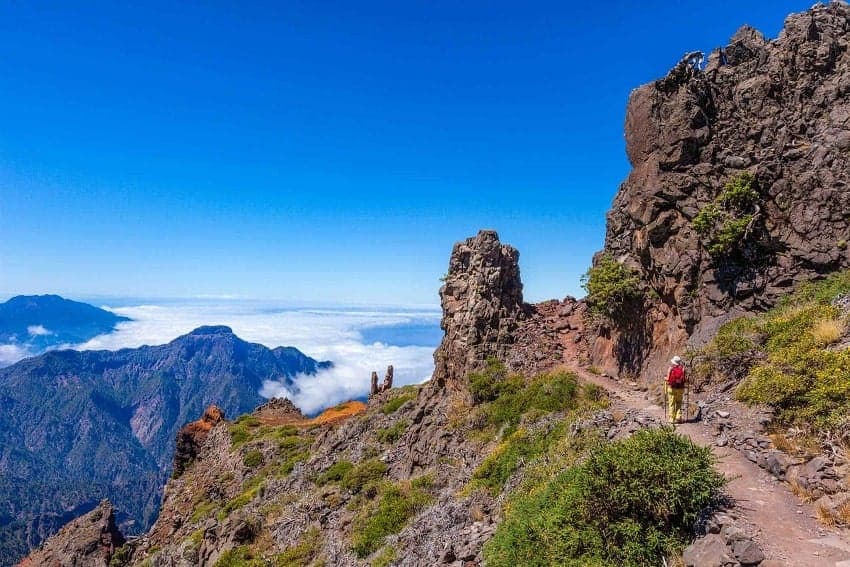
The island of La Palma offers breathtaking landscapes, remote beaches, imposing volcanoes, dense forests and incomparably starry skies.
With its 708 square kilometres, an elevation of 2.426m and its shape of a heart it is the most Western island of the Canary Island chain. Like every island in this archipelago, La Palma was created by volcanic activity. It is one of the youngest of the seven islands, dating back some 1.7 million years. The volcanic origin of La Palma is still clearly recognizable today, especially the southern part of the island with the dormant volcano Teneguía which last erupted in 1971, and offers interesting insights into its geological past.
The year-round mild climate with average temperatures between 18 and 27 degrees Celsius produce spring-summerlike weather as a result of the northeast trade winds.
This weather phenomenon is responsible for a pleasant subtropical climate and a rich green vegetation that prevails because of the humidity carried along in the trade winds. These moisture rich winds at certain times of the year also create a spectacular waterfall of clouds cascading down the central mountain faces and hence the nicknames Isla Verde – Green Island and Isla Bonita – Beautiful Island.
The unique geological structure of the island with its variety of vegetation zones and microclimates that are rarely found in the world on such a small area make this island a miniature universe. Each area of the island varies completely from another. In 1983 La Palma was declared a UNESCO biosphere reserve.
Another special feature of La Palma is the unique night sky. Due to its location in the Atlantic Ocean, sparse population, minimum light pollution and highest mountain peak Roque de los Muchachos 2.426m, the island was chosen as the location for one of the largest and modern observatories in the world.
The official population of the island is approximately 80,000 people. Traditional festivals such as the Bajada de la Virgen or Los Indianos carnival, famous far beyond the island’s borders, bear witness to the zest for life of the local people (Palmeros). Not only the geographical location, but also the numerous immigrants from Central and South America show a variety of Hispanic influences in island life, cuisine and cultural.
Read more...

